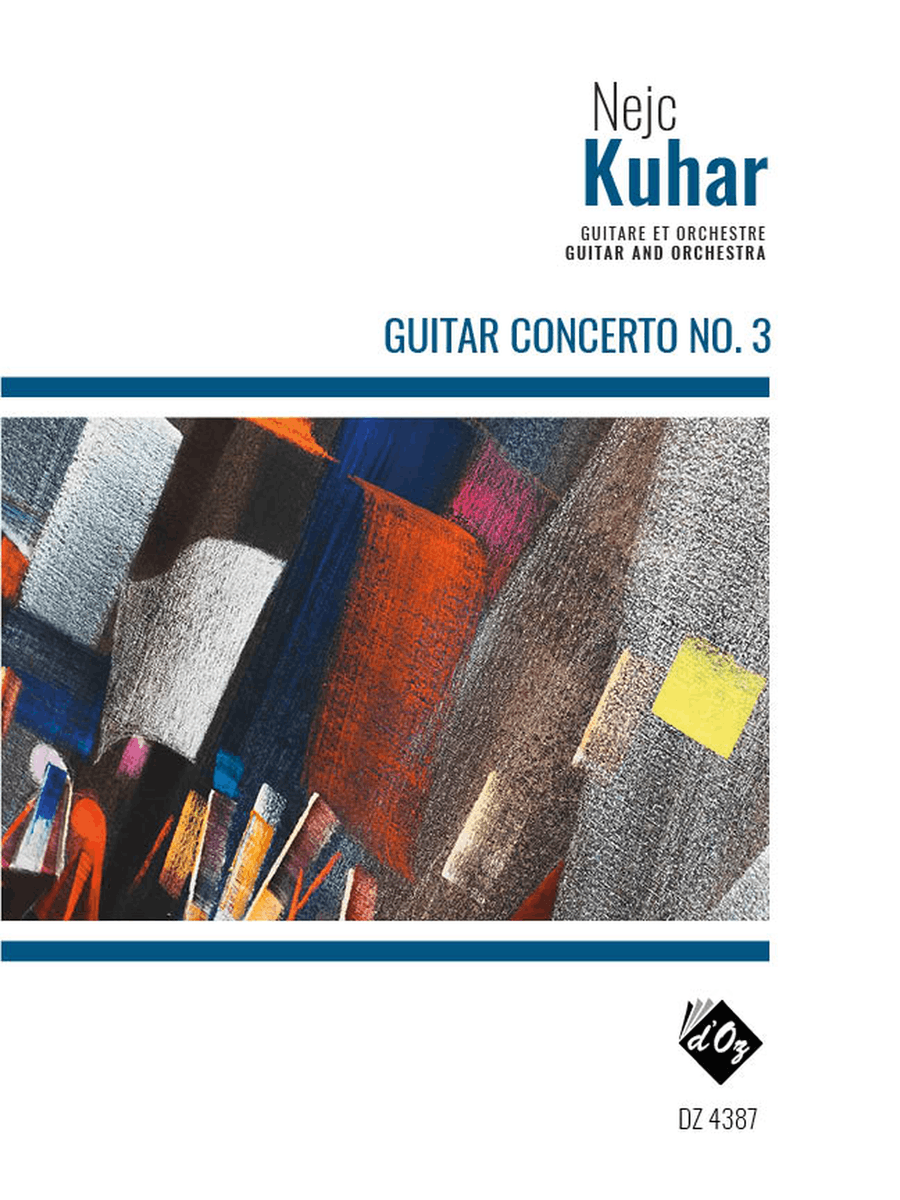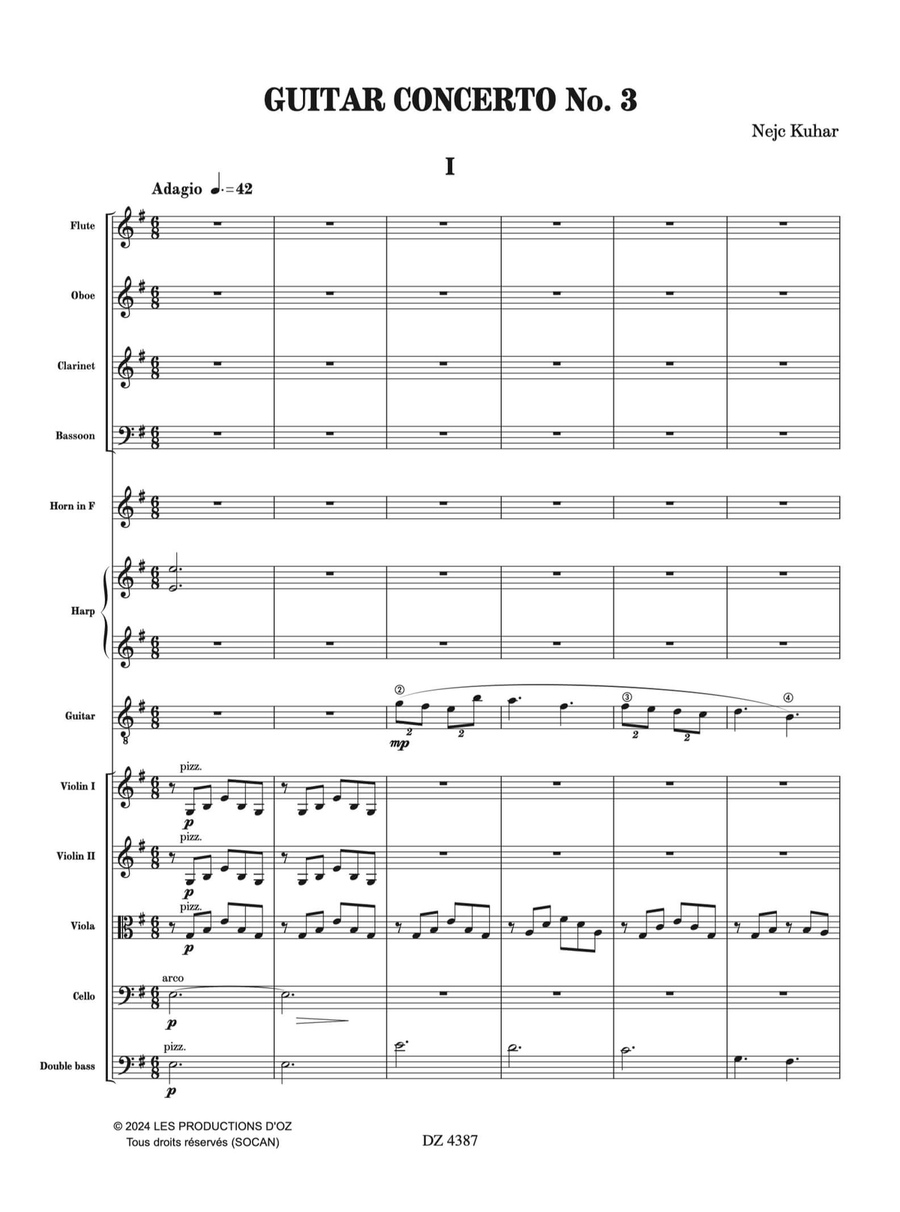Guitar and orchestra - Advanced
SKU: DZ.DZ-4387
Composed by Nejc Kuhar. Score and parts. Les Productions d'OZ #DZ 4387. Published by Les Productions d'OZ (DZ.DZ-4387).
ISBN 9782898523045.
I consider Guitar Concerto No. 3 to be the "best of both worlds." Let me explain.
My first two concerti, Guitar Concerto No. 1 and Guitar Concerto No. 2 (also published by Les Productions d'OZ), could not be more different from each other.
No. 1 is (in my opinion) ‘tour de force’ of guitar technique, lasting almost 30 minutes and spanning over four movements.
No. 2, on the other hand, was written with an intermediate level of guitar technique in mind. It is easy for the soloist to perform and is written in a two-movement structure, lasting approximately 10 minutes.
How can I combine both? How can I write a concerto that would be straightforward to perform, while still allowing me to achieve full artistic and expressive freedom?
My answer is Concerto No. 3. I once again decided on a two-movement form, as it is a relatively unique concept in the world of guitar concerti while at the same time having the advantage of being concise.
Inspired by Aaron Copland’s Clarinet Concerto, this structure allowed me to explore two of my favorite musical characters: The first movement adopts a lyrical, neo-romantic style, while the second is a fierce, virtuoso finale - aggressive and unapologetically in-your-face.
Je considère le Concerto pour guitare n° 3 comme le « meilleur des deux mondes ». Je m’explique.
Mes deux premiers concertos, le Concerto pour guitare n° 1 et le Concerto pour guitare n° 2 (également publiés par Les Productions d’OZ), ne pourraient pas être plus différents l’un de l’autre.
Le n° 1 est (à mon avis) un « tour de force » de technique de guitare, d’une durée de près de 30 minutes et s’étalant sur quatre mouvements.
Le n° 2, en revanche, a été écrit pour un niveau intermédiaire de technique de guitare. Il est facile à jouer pour le soliste et est écrit dans une structure en deux mouvements, d’une durée d’environ 10 minutes.
Comment puis-je combiner les deux ? Comment puis-je écrire un concerto qui serait simple à jouer, tout en me permettant d’atteindre une pleine liberté artistique et expressive ?
Ma réponse est le Concerto n° 3. J’ai encore une fois opté pour une forme en deux mouvements, car c’est un concept relativement unique dans le monde des concertos pour guitare tout en ayant l’avantage d’être concis.
Inspirée du Concerto pour clarinette d’Aaron Copland, cette structure m’a permis d’explorer deux de mes personnages musicaux préférés : le premier mouvement adopte un style lyrique et néo-romantique, tandis que le second est une finale féroce et virtuose, agressive et résolument agressive.





